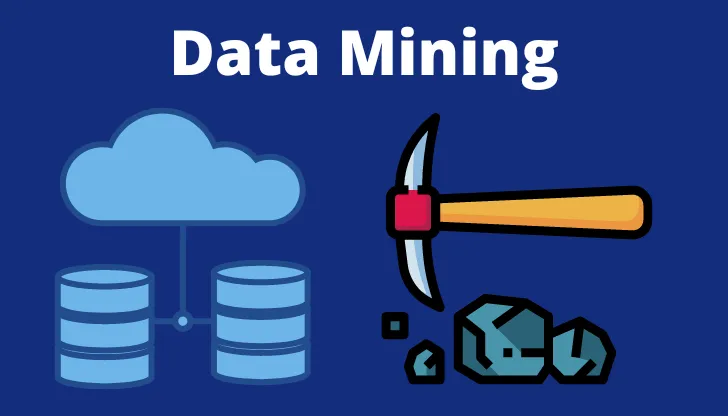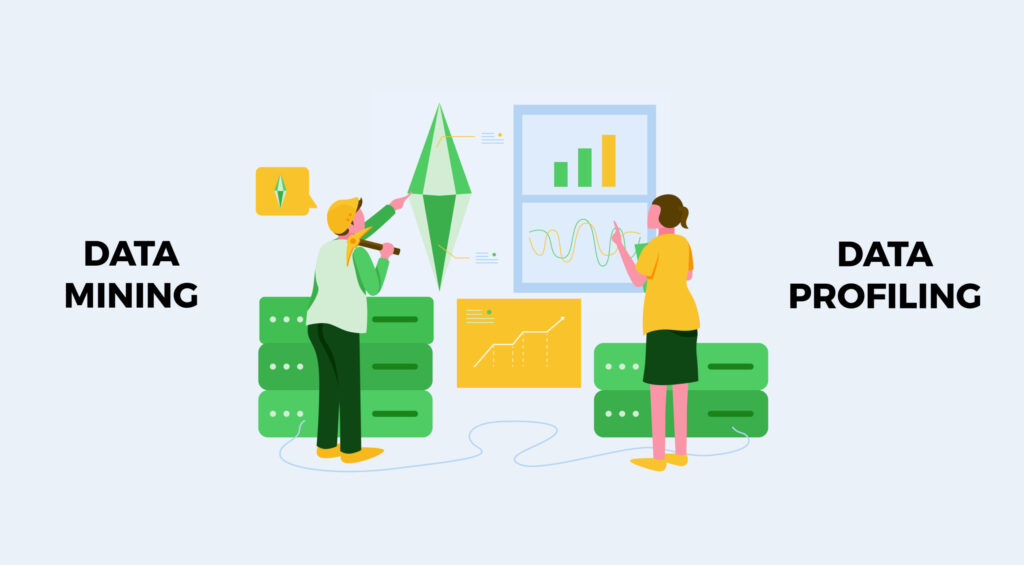When working in the field of machine learning and data analysis, data profiling and data mining are widely used, and various definitions are scattered in various fields. The two terms are often confused, and in some cases, people even use them interchangeably. While the two seem to be the same thing, they are not. Through this article, we try to analyze the differences between these two topics in terms of concepts, applications, etc.
Table of Contents
Understanding The Two Terms
Data Mining

Data mining is a process of identifying patterns and correlations in large datasets to obtain more useful bits of knowledge. This meaningful knowledge can then be fed into the broader field of business intelligence. The need to understand large, complex datasets is common in nearly all fields of business, science, and engineering. The whole process of applying computer-based methods (including new technologies) to extract useful information hidden in data is called data mining. It just evaluates a lot of raw data and turns it into information. Data mining is the search for new, valuable, and non-trivial knowledge in large datasets and then using this information to discover relationships and hidden patterns in those datasets. Simply put, data mining is mining knowledge from data.
Data Profiling

Data profiling is the process of analyzing raw data from existing datasets with the aim of gathering statistics or summaries of information about the data. It refers to a set of activities designed to determine the metadata of a given dataset when it is not available and to validate the metadata when it is available. This metadata, such as statistics about dependencies between data or columns, can help understand and manage new datasets. Some data profiling can be applied to any data type, while some are type-specific. This is very different from data profiling, which is used to obtain business information from data. Data profiling is used to obtain information about the data itself and to assess data quality to find anomalies in the data set. Additionally, it helps understand and prepare data for subsequent cleaning, integration, and analysis.
Main Differences Between Data Mining and Data Profiling

Paraphrase
Data mining is a process of identifying patterns and correlations present in raw data and interpreting these patterns in its problem domain to transform them into useful information and knowledge. This meaningful knowledge can then be fed into the broader field of business intelligence. Data profiling, on the other hand, is the process of analyzing data from an existing dataset to determine the actual content, structure, and quality of the data. Data profiling is a process of learning from data.
Process
Data profiling employs a range of activities including discovery and analysis techniques to gather statistics or summaries of information about the data, which can then be analyzed by business analysts to determine whether the data aligns with business intent. It helps understand and prepare data for subsequent cleaning, integration, and analysis. On the other hand, data mining can be divided into two categories: predictive data mining, which involves using some variables in a dataset to predict unknown or future values of other variables of interest; descriptive data mining, which focuses on generating data based on available datasets New non-trivial information.
Intention
The purpose of data mining is to mine data for actionable information. It involves the efficient collection and processing of data, and the use of sophisticated mathematical algorithms to segment the data and predict future trends so that it can be used in the wider field of business intelligence. The purpose of data profiling is to obtain information about the data and assess the quality of the data in order to find anomalies in the data set. The goal is to create a knowledge base of accurate information about the data. Sometimes this process needs to be repeated on critical data stores to ensure that the information remains accurate.
Conclusion
After briefly analyzing these two concepts, it can be said that some techniques of data mining are used for data profiling. Data mining is a fairly broad concept based on the fact that large amounts of data in almost every field need to be analyzed, and data profiling adds value to that analysis. Many steps, such as data cleaning and data preparation, are similar in both concepts, and it is processing data for an ultimately different goal that makes these two different.




